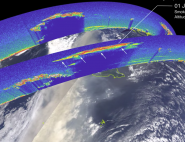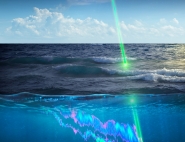Organization
Overall Organization
Overall responsibility for mission success—including costs and schedule, in accordance with ESSP rules—falls to the NASA Principal Investigator (PI), assisted by French (IPSL) and American (Hampton University) Co-PIs.
Project execution itself is the responsibility of a NASA-CNES integrated project team, the Mission Management Team. This team is responsible for conducting and planning the mission from start to end, and is the NASA ESSP Project Office contact (ESSP stands for Earth System Science Pathfinder).
It is composed of a NASA Project Manager in charge of the entire project, assisted by CNES, Ball and NASA project manager assistants, in coordination with the PI (NASA) and the Co-PIs (IPSL and Hampton University).
High-level direction is ensured by the Joint Steering Group (JSG) for the mission direction, and by the Mission Advisory Group (MAP) for the project’s general progress.
The Mission Advisory Panel (MAP) oversees the project. It is composed of the Langley Center manager, the CNES Director of Orbital Systems, the Ball Aerospace Vice-President, the IPSL director or their representatives, with designated observers invited where needed. The MAP verifies the project's progress, checks that supply schedules are complied with for the PIs and project managers, and resolves conflicts that the project team cannot solve.
The JSG's role is to define the project’s main programmatic direction. It can also make decisions to resolve issues that MAP could not solve. It is composed of an equal number of representatives appointed by each party, is co-chaired by the NASA Associate Administrator for Earth Sciences, CNES's Deputy Director for Earth Sciences, and includes the director of INSU, the French national institute for universe science. This committee meets at the request of any of the parties.
As regards scientific direction, all Principal Investigators work together within a Science Team. This team is managed by the Project Science Lead, D. Winker (NASA), assisted by his two Co-Investigators, P. Mc Cormick (Univ. Hampton) and J. Pelon (IPSL). He helps to define the mission's scientific aspects.
Finally, an international group of scientists, the International Science Advisory Panel (ISAP), provides an independent assessment of the science goals and scientific progress, and helps to report progress to a wider international audience.
French contribution
CNES is responsible to NASA for the French contribution to this project.
CNES is responsible for the satellite (engineering, AIT and the supply of simulators), the ground control segment, the infrared imaging cameras, as well as the IIR processing algorithms, the processing centre at the IPSL and CNES imager expert site. During the campaign, satellite responsibility is transferred to NASA for operations on the launch site.
CNES supports NASA for management tasks (while retaining responsibility for its own management of activities in France) and system tasks. It also provides expert support to NASA for the infrared imager, for which it conducts ground calibration.
CNES operates the satellite while it is in orbit; NASA manages the payload and transmits telecommands to upload to CNES.
As part of the French contributions, the IPSL is responsible for the science data processing and provides services relative to the instrument:
- IIR and lidar airborne simulator development
- Level 2 and 3 IIR algorithms for operational encoding in the USA
- CALIPSO data archive mirror site development
- Contribution to IIR calibration, validation of IIR and IIR operational sequences
CNES supplies the level 1 IIR data processing algorithms, and developed the IIR instrument expert site.


